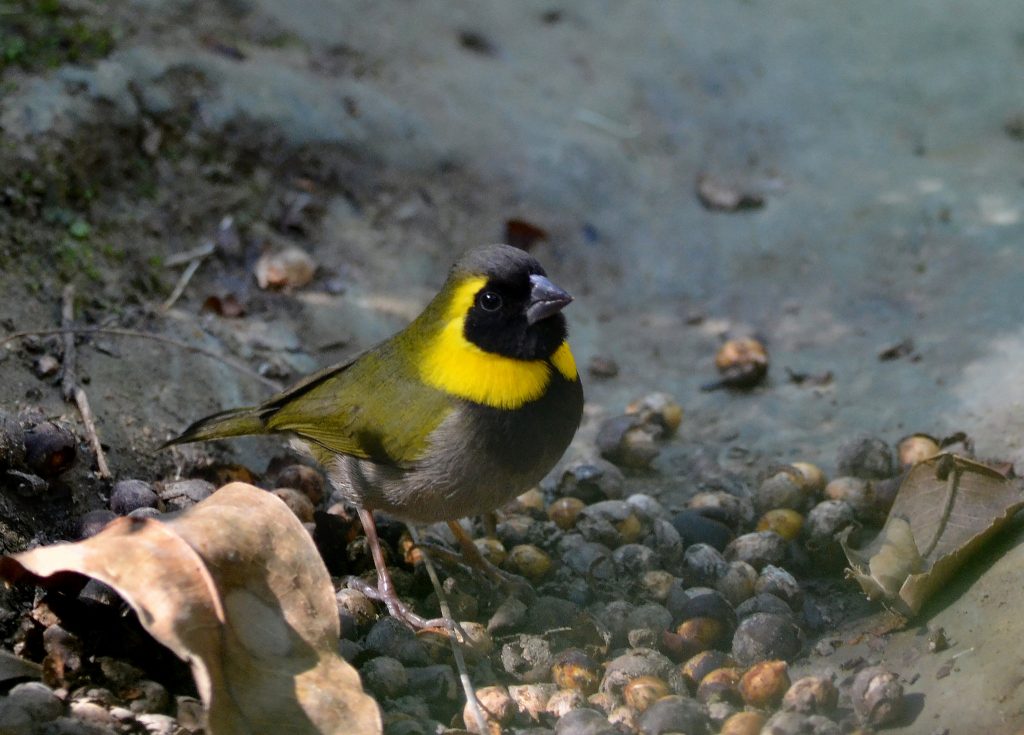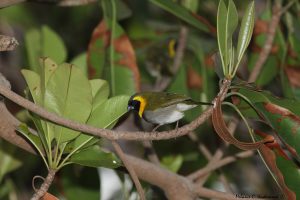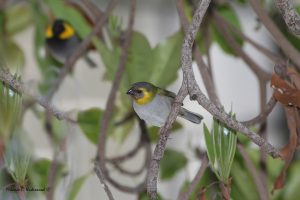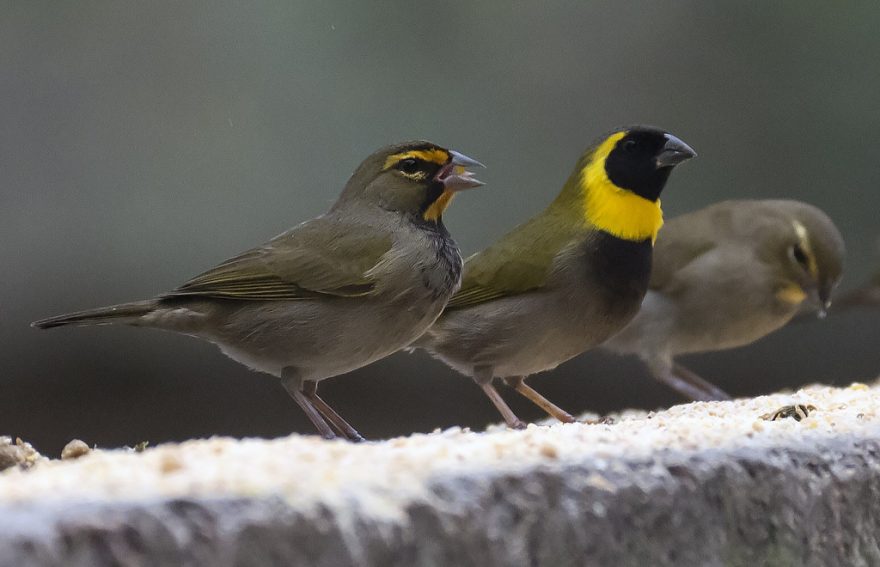The Cuban finch, known also as the Cuban grassquit, is a small finch indiginous to the Bahamas, Cuba, and Turks and Caicos Islands; where it lives in tropical forests and shrubland. The species is well established in aviculture throughout most of the world, however they have a reputation for being difficult to keep, making them uncommon outside of the collections of experienced breeders.

Housing & Compatibility
Cuban finches are an active species that is generally not suitable for a cage. They are best housed in an aviary, ideally large and planted.
Cuban finches can be aggressive and are known to kill other Cuban finches. They should be housed as single pairs in their own aviary or as part of a mixed collection. Cubans may also target other species that share their yellow plumage, so cage-mates should be selected carefully. Aggression varies between individual birds, so it’s best to monitor the bird’s behavior closely after introducing them into a collection.
Especially aggressive males may also attack other Cuban finches in adjoining aviaries, so double-wired aviary partitions should be used if adjoining housing cannot be avoided. Young Cuban finches will also be attacked by their parents when they reach sexual maturity, so a second aviary may be needed for temporary housing.
Cuban finches can successfully be housed with most placid finches, quail, doves, and (space permitting) Neophema parrots.
Breeding
Cuban finches should not be permitted to breed until they are over twelve months of age. They will breed throughout year, though they should be preventing from breeding during winter and the hottest parts of summer. They will produce multiple clutches per year, bu allowing them to produce more than three can lead to health issues and a shortened lifespan.
Both parents will construct a large done-shaped nest at 1-2 meters (4-7ft) above the ground using fine dry grass. The hen will lay 2-4 eggs that will be incubated by both parents for approximately two weeks. Young birds will fledge at approximately three weeks of age and become fully independent within a month. The young must be removed as soon as they become independent to prevent aggression.
Cuban finches are prone to nest abandonment if they are disturbed when sitting on eggs or chicks. Nest inspections should be avoided.
Sexing
Males are much darker in colouration than females.
 |
 |
Diet & Feeding
A quality finch seed mix including canary seed and various millets forms the basis of the Cuban finch’s diet. Seed lacks many essential vitamins and minerals which must be compensated for by introducing other foods. Sprouting seed increases its nutritional value and is a cheap way to improve your bird’s health. Freshly grown green seed heads should also be offered frequently.
Leafy greens such as kale, bok choy, endive and silverbeet are in important part of the Cuban’s diet. Spinach can also be given, but only sparingly as it can contribute to calcium deficiency.
Live food is not absolutely necessary but will be readily consumed during the breeding season. Small mealworms and termites are most frequently given.
Do not feed anything from the list of forbidden foods.

Health
A strict worming and parasite control regime is essential to ensure the long-term health of any finch collection. Cuban finches can live for approximately 6 years.
Agree that considerable variation in personality can exist. Had one cock for many years who lived with orange breasteds and canarys with absolutely no agression at all. And a later one that killed orange breasteds on sight and had the canarys very jumpy. Found the plastic rat balls made excellent nests for them.